News
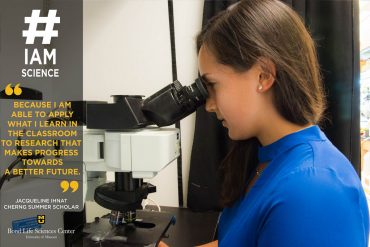
June 14, 2017
Jacqueline Ihnat #IAmScience
Jacqueline Ihnat, one of the 12 Cherg Summer Scholars chosen from within the Honors College at MU in 2017. | Photo by Mary Jane Rogers, Bond LSC By Mary Jane Rogers | Bond LSC “#IAmScience because I am able to apply what I learn in the classroom to research that makes progress towards a better future.” Jacqueline Ihnat was recently selected as one of the 12 Cherng Summer Scholars within the Honors College at the University of Missouri. This scholarship provides her with $8,000 to fund her summer research. She’s fascinated with cells and how our bodies…
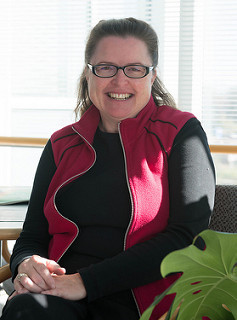
June 7, 2017
The evolution of a corn geneticist
By Jennifer Lu |Bond LSC Paula McSteen is a professor of biological sciences at MU and a researcher at the Bond Life Sciences Center. | Photograph by Jennifer Lu, Bond LSC When developmental plant geneticist Paula McSteen thinks about the specimens she studies, one word comes to mind: potential. She thought it as she stood in the midst of the first corn field she ever planted as a post-doctoral fellow in corn genetics. She thinks it as she counts kernels from corn crosses that will be sent to Hawaii, a hotspot for corn geneticists looking to…
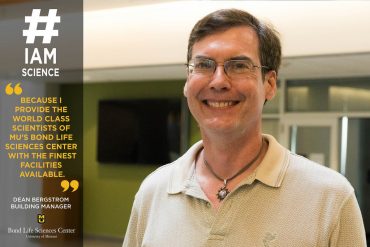
June 6, 2017
Dean Bergstrom #IAmScience
Dean Bergstrom, the new building manager for Bond LSC. | Photo by Mary Jane Rogers, Bond LSC By Mary Jane Rogers | Bond LSC “#IAmScience because I provide the world class scientists of Mizzou’s Bond Life Sciences Center with the finest facilities available.” As the new building manager for the Bond Life Sciences Center, Dean Bergstrom makes it possible for everyone else to focus on his or her research. He’s worked in Bond LSC for nine and a half years as a research technician, and in Tucker Hall eleven years before that. His unique science background and…
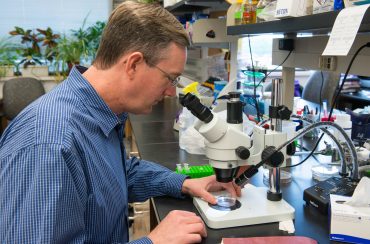
May 24, 2017
Small steps to treat neuromuscular disorder
Researchers find evidence of a genetic modifier that can improve symptoms of Spinal Muscular Atrophy Chris Lorson examines axons through a microscope. Lorson’s lab recently published results that showed evidence that the protein plastin 3 affects the severity of SMA. | Photo by Eleanor Hasenbeck, Bond LSC Eleanor Hasenbeck | Bond Life Sciences Center Two new potential treatments might improve the lives of patients living with Spinal Muscular Atrophy. Researchers in the Lorson lab at Bond Life Sciences Center recently produced a new drug that increases the lifespans of mice with SMA, and they found…
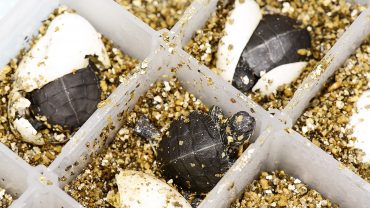
May 15, 2017
BPA rewires the sex of turtle brains
By Jinghong Chen | Bond Life Sciences Center Painted turtle eggs were brought from a hatchery in Louisiana, candled to ensure embryo viability and then incubated at male-permissive temperatures in a bed of vermiculite. Those exposed to BPA developed deformities to testes that held female characteristics.Photo by Roger Meissen | © 2015 – MU Bond Life Sciences Center Cool dudes, hot mommas. This is the underlying concept behind sex development in painted turtles, a species that lacks sex chromosomes. A painted turtle’s sex is determined by temperature at which the eggs are incubated at…
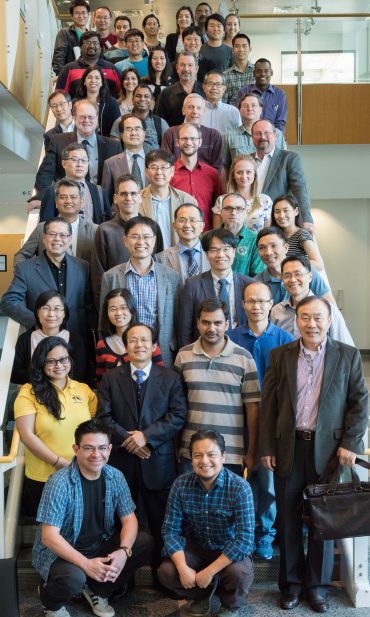
May 12, 2017
Old friends, new ideas
A partnership between MU and Gyeongsang National University in South Korea has created lasting connections By Eleanor Hasenbeck | Bond Life Sciences Center Discussion went global this week as researchers converged from Gyeongsang National University in South Korea, MU and Washington University at Bond Life Sciences Center for the sixth MU-GNU International Joint Symposium in Plant Biotechnology. Plant biologists from each university shared their research, ranging from molecular biology and signaling to breeding soybeans for improved yields. The symposium is held every two years, alternating locations between the U.S. and South Korea. This conference marks the eleventh…
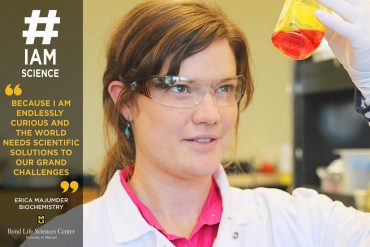
April 26, 2017
Erica Majumder #IAmScience
Erica Majumder, a biochemistry Ph.D candidate. | photo by Morgan McOlash, Bond LSC By Mary Jane Rogers | Bond LSC “#IAmScience because I am endlessly curious and the world needs scientific solutions to our grand challenges.” That is the attitude of someone who does her research with a purpose. Since the age of 14, Erica knew she wanted to pursue a degree in chemistry. Today, she uses that passion to research how anaerobic bacteria interact with uranium; essentially asking the question, “How do microbes and metals interact?” What’s her end game? Improved health of the…
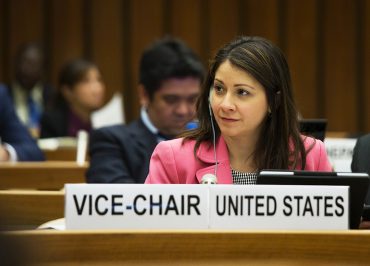
April 5, 2017
From neuroscience to negotiations
Neuroscientist and former Secretary of State science adviser to speak at Life Sciences Week By Eleanor C. Hasenbeck | Bond Life Sciences Frances Colón has spent the past decade representing the United States all over the world on topics ranging from climate change to the advancement of women scientists. She will reflect on that experience in her talk at 3:30 p.m. Monday, April 11 in Monsanto Auditorium. | Photo courtesy of Frances Colón A career in science doesn’t only mean working in a lab, and no one knows that better than Frances Colón. Colón, a…
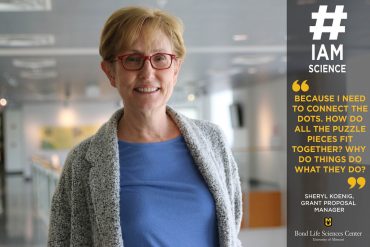
April 5, 2017
Sheryl Koenig #IAmScience
Sheryl Koenig, the Grant Proposal Manager at Bond LSC. | photo by Morgan McOlash, Bond LSC By Mary Jane Rogers | Bond LSC “#IAmScience because I need to connect the dots. How do all the puzzle pieces fit together? Why do things do what they do? How can I apply that to other things?” For Sheryl Koenig, science communication is an enormous part of her daily tasks. She works with researchers and scientists during the grant proposal process to translate technical scientific concepts into persuasive and relevant content. Why? So that those scientists can access…
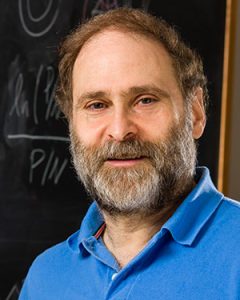
April 4, 2017
National Cancer Institute researcher to speak at Life Sciences Week
By Jinghong Chen | Bond Life Sciences Center “Living things are too beautiful for there not to be a mathematics that describes them.” Thomas D. Schneider will speak Tuesday, April 11 in Bond LSC’s Monsanto Auditorium. | Photo by National Institutes of Health This is Thomas Schneider’s motto. Schneider, a research biologist at the National Cancer Institute, spent most of his career understanding math and its relation with fundamental biology. His lab focuses on the DNA and RNA patterns that characterize genetic control systems; they invented the widely-used sequence logos. “In the first place, I…
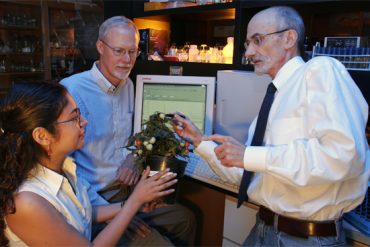
April 3, 2017
Hanson to explain why broken metabolites matter at Life Sciences Week
By Jinghong Chen | Bond Life Sciences Center Andrew Hanson, right, will speak Friday, April 14 in Bond LSC’s Monsanto Auditorium as the 2017 Dr. Charles W Gehrke speaker. | Photo by University of Florida, Institute of Food and Agricultural Sciences People often think of metabolism as a perfect network. But that assumption is simply not accurate. Andrew Hanson, an eminent scholar and professor at the University of Florida, describes the misunderstanding as “the power of a paradigm.” American biochemist Albert Lehninger spread the misunderstanding in his classic textbook “Biochemistry”, in which the message he…
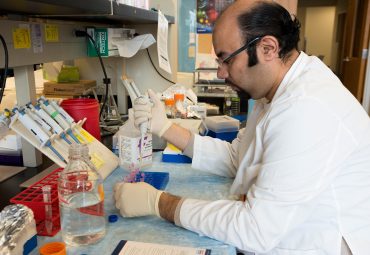
March 23, 2017
Why self-defense turns self-attack
By Jinghong Chen | Bond Life Sciences Center Mahmoud Khalafalla, a Ph.D. student at Weisman’s lab, is isolating RNA from salivary glands of Sjögren’s syndrome mouse model to look for the expression of pro-inflammatory genes. | photo by Jinghong Chen, Bond LSC Our immune system is often the key to our health. Everyday, it works to protect us from foreign invaders such as bacteria and virus, but what happens when it attacks our own tissues? Gary Weisman, a Curator’s Distinguished Professor of Biochemistry at the Bond Life Sciences Center, is working to advance our understanding of…